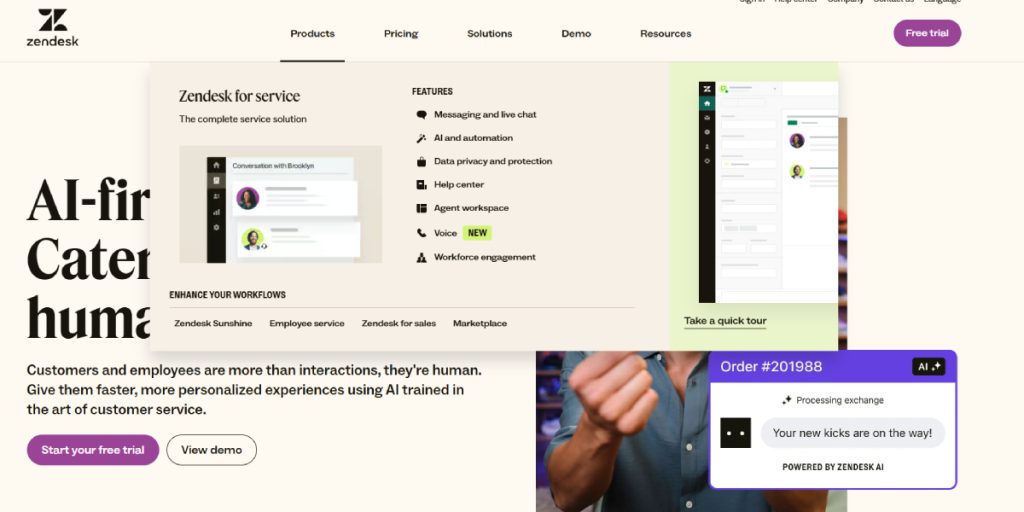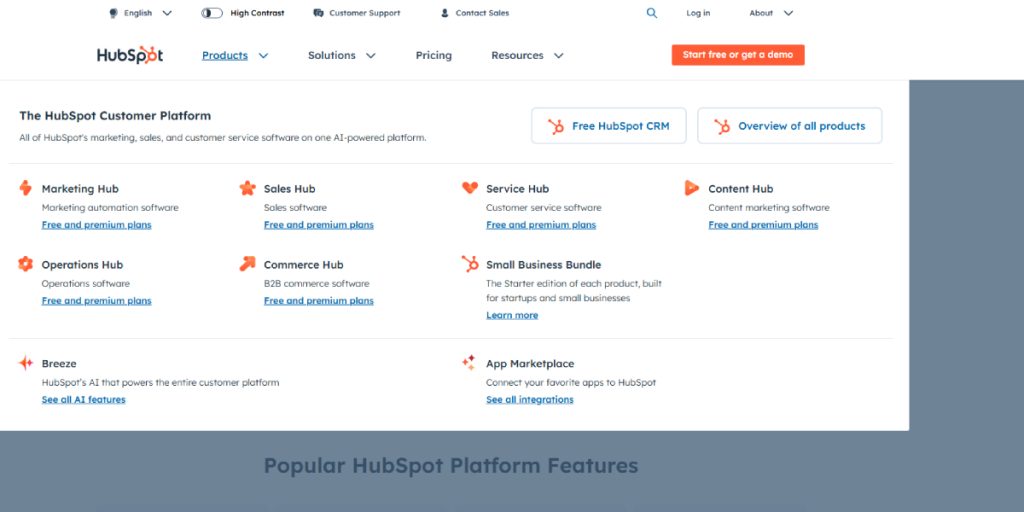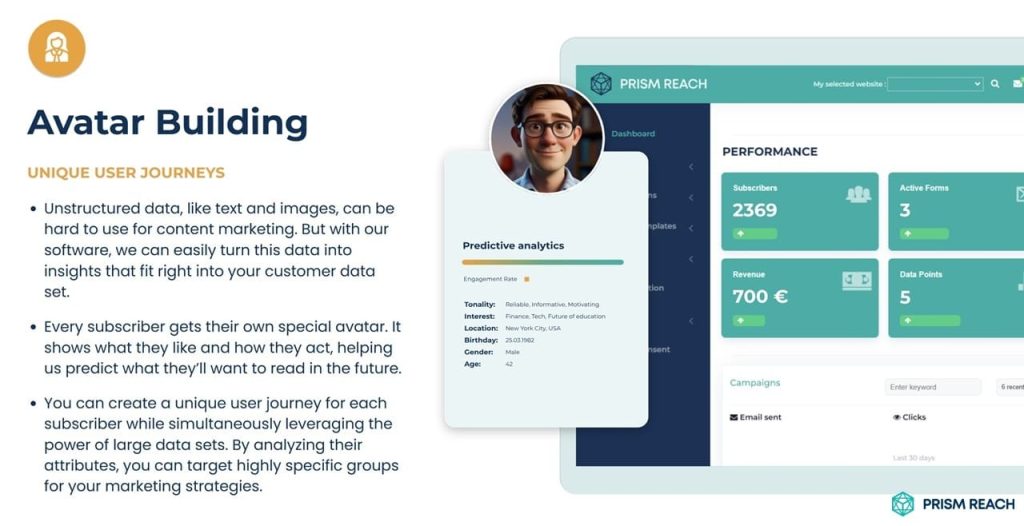In today’s digital-first business environment, choosing the right customer service software can make or break a company’s relationship with its clients. Two giants in this arena, Zendesk and HubSpot, offer robust solutions tailored to different business needs. This comparison delves into the intricacies of both platforms, helping decision-makers navigate the complex landscape of customer relationship management (CRM) tools.
As businesses strive to provide seamless customer experiences across multiple channels, the debate between Zendesk’s specialized customer support focus and HubSpot’s all-in-one CRM approach has never been more relevant. Understanding the strengths and weaknesses of each platform is crucial for companies looking to enhance their customer service operations and drive growth through improved customer satisfaction. Additionally, innovative solutions like Prism Reach are emerging to complement these platforms, offering specialized tools for deep personalization in email marketing.
Key Facts
- Zendesk excels in customer support with a robust ticketing system and omnichannel support capabilities.
- HubSpot offers an integrated CRM platform combining marketing, sales, and customer service tools.
- Both platforms provide AI-powered features, extensive integrations, and scalability for businesses of various sizes.
- Prism Reach is an AI-powered SaaS solution focused on enhancing email marketing through deep personalization, complementing the capabilities of Zendesk and HubSpot.
- Prism Reach enhances both Zendesk and HubSpot by offering sophisticated tools for content personalization and subscriber engagement.
Zendesk vs HubSpot: A Tale of Two CRM Titans


Specialization vs Integration: Core Philosophies
Zendesk and HubSpot represent two distinct approaches to customer relationship management. Zendesk has established itself as a specialized customer support solution, offering a comprehensive toolkit designed to streamline and enhance the support experience. Its robust ticketing system efficiently manages customer inquiries across multiple channels, demonstrating its prowess in handling complex support scenarios.
In contrast, HubSpot adopts a more holistic approach to CRM. By maintaining a centralized database of contacts accessible across all hubs, HubSpot provides a unified view of the customer journey, integrating marketing, sales, and service functions. This fundamental difference in philosophy shapes how each platform approaches customer management, with Zendesk focusing on depth in support and HubSpot offering breadth across the entire customer lifecycle.
AI Integration: Enhancing Customer Interactions
Both Zendesk and HubSpot have embraced artificial intelligence to enhance their offerings, albeit with different focuses. Zendesk leverages AI primarily to boost its support capabilities, incorporating predictive analytics and chatbots. These AI-powered tools, including answer bots, streamline customer support processes by automating responses and predicting customer needs.
HubSpot, on the other hand, integrates AI across its entire platform, extending beyond customer support to encompass marketing and sales functions. Its AI-driven functionalities include predictive lead scoring, which helps prioritize sales efforts, and content optimization, which enhances marketing effectiveness.
Both platforms utilize chatbots to improve efficiency and customer engagement, demonstrating a shared commitment to leveraging AI for better customer interactions. The difference lies in the scope of AI application, with Zendesk concentrating on support and HubSpot applying AI more broadly across its unified platform.
Scalability and Growth: Adapting to Business Needs
Scalability is a crucial factor for businesses choosing a CRM platform, and both Zendesk and HubSpot offer robust solutions in this area, albeit catering to different growth trajectories. Zendesk is designed to scale effortlessly from startups to global enterprises, making it an excellent choice for businesses anticipating rapid growth in their support needs. This scalability ensures that as a company expands, its customer support infrastructure can seamlessly grow alongside it.
HubSpot, with its free CRM version and tiered pricing model, provides a more gradual scaling path. This approach allows businesses to start with basic features and add more advanced functionalities as they grow, offering flexibility in terms of both features and cost. The choice between the two often depends on a company’s projected growth rate and the specific areas where they anticipate needing the most scalability.
Integration Capabilities: Building a Comprehensive Tech Stack
In today’s interconnected business environment, the ability to integrate with other software solutions is paramount. Both Zendesk and HubSpot excel in this area, offering extensive integration capabilities that allow businesses to create a tailored tech stack.
Zendesk boasts over 1,500 third-party integrations, covering a wide range of business tools and applications. This extensive ecosystem enables companies to connect their support system with other crucial business processes seamlessly.
HubSpot, not to be outdone, features more than 1,600 integrations in its marketplace. This vast array of integration options allows businesses to extend the functionality of the HubSpot platform, connecting it with various tools for marketing, sales, accounting, and more. The robust integration capabilities of both platforms ensure that businesses can create a cohesive and efficient workflow across all their systems.
Specialized Features: Catering to Specific Business Needs
While both platforms offer comprehensive CRM solutions, they each have areas where they particularly excel. HubSpot stands out with its content management system (CMS) and marketing automation tools. These features provide robust capabilities for email campaigns, lead nurturing, and analytics, making HubSpot a more comprehensive solution for businesses looking to align their marketing efforts with customer service. This integration of marketing and CRM functionalities allows for more cohesive customer engagement strategies.
Zendesk, on the other hand, takes the lead in specialized customer service features. Its strengths lie in SLA management, customizable agent workspaces, and advanced reporting tools. Zendesk offers advanced custom reporting with metrics, dashboards, and drill-in capabilities to analyze service operations, making it a top choice for businesses that prioritize excellence in customer support and require deep insights into their service performance.
Hidden Gems: Enhancing Customer Service and Engagement with Zendesk and HubSpot
To maximize the effectiveness of Zendesk or HubSpot, integrating lesser-known strategies can provide significant advantages. Here are five hidden gems that can enhance your customer service and engagement efforts:
1. Utilize Custom Ticket Fields in Zendesk
Strategy: Create custom ticket fields in Zendesk to capture specific information relevant to your business needs, such as product version or issue severity.
Potential Effectiveness: This allows for more tailored responses and better tracking of recurring issues, leading to improved customer satisfaction.
Level of Obscurity: Moderate; while customization is available, many users do not fully leverage it.
Ease of Implementation: Easy; Zendesk provides a straightforward interface for creating custom fields.
Uniqueness: Enhances the specificity of support interactions, allowing for more personalized service.
2. Implement Automated Workflows in HubSpot
Strategy: Use HubSpot’s workflow automation to streamline service operations, such as automatically routing tickets based on issue type or customer tier.
Potential Effectiveness: Reduces response times and ensures that high-priority issues are addressed promptly.
Level of Obscurity: High; many users do not fully utilize automation capabilities.
Ease of Implementation: Moderate; requires some setup but is manageable with HubSpot’s user-friendly tools.
Uniqueness: Provides a proactive approach to customer service by automating routine tasks.
3. Leverage Knowledge Base Integration
Strategy: Transition your existing knowledge base from Zendesk to HubSpot’s knowledge base, customizing it for branding and organization.
Potential Effectiveness: Reduces incoming support tickets by empowering customers to find answers themselves, leading to improved efficiency.
Level of Obscurity: Moderate; while both platforms offer knowledge bases, the transition process is often overlooked.
Ease of Implementation: Moderate; requires careful migration and organization of content but is feasible with planning.
Uniqueness: Combines marketing and support resources into one platform, enhancing user experience.
4. Use Customer Feedback Loops
Strategy: Implement feedback loops in HubSpot using NPS surveys or customer satisfaction surveys after support interactions to gather insights on service quality.
Potential Effectiveness: Provides actionable data for continuous improvement in customer service strategies.
Level of Obscurity: High; many organizations do not actively seek feedback post-interaction.
Ease of Implementation: Easy; HubSpot offers built-in tools for creating and distributing surveys.
Uniqueness: Establishes a direct line of communication with customers regarding their experiences, fostering loyalty.
5. Sync Data Between Platforms
Strategy: Use integration tools (like Zapier) to sync data between Zendesk and HubSpot, ensuring that customer interactions and support tickets are accessible across both platforms.
Potential Effectiveness: Provides a comprehensive view of customer interactions, enabling more informed responses from sales and support teams.
Level of Obscurity: Moderate; while integrations are known, specific use cases for syncing data are often overlooked.
Ease of Implementation: Moderate; requires initial setup but can automate ongoing processes once established.
Uniqueness: Enhances collaboration between sales and support teams by providing a unified view of customer data.

Practical Tips for Maximizing Your CRM and Customer Service
To fully leverage the capabilities of Zendesk, HubSpot, and Prism Reach, consider the following practical tips:
- Leverage Custom Ticket Fields: Use Zendesk’s custom ticket fields to gather specific information that can enhance support interactions and improve issue resolution times.
- Implement Automated Workflows: Utilize HubSpot’s workflow automation to streamline ticket routing and ensure that high-priority issues are handled promptly.
- Integrate Knowledge Bases: Transition your knowledge base to HubSpot’s platform to empower customers to find answers independently, reducing the volume of support tickets.
- Collect and Act on Feedback: Implement customer feedback loops in HubSpot to gather insights post-interaction, using the data to refine your service strategies.
- Sync Data Across Platforms: Use tools like Zapier to sync data between Zendesk and HubSpot, ensuring that sales and support teams have access to comprehensive customer information.
- Optimize Follow-Up Communications: Automate follow-up emails in HubSpot after ticket resolution to check on customer satisfaction and offer further assistance.
- Utilize AI-Powered Insights: Leverage HubSpot’s AI capabilities to analyze customer interactions and predict potential churn or upsell opportunities.
- Create Custom Reports: Develop custom reports in both Zendesk and HubSpot to focus on KPIs that align with your business objectives, facilitating data-driven decision-making.
- Enhance Onboarding Processes: Use HubSpot’s onboarding tools to create structured onboarding processes for new customers, integrating support resources from Zendesk as needed.
- Monitor Customer Health Scores: Implement customer health scores in HubSpot to track engagement levels over time, identifying at-risk customers early on.
By integrating these tips into your customer service and CRM strategy, you can create a more cohesive and effective approach that leverages the strengths of each platform and tool, ultimately driving better results and higher ROI.
Innovative Solutions by Prism Reach
While Zendesk and HubSpot offer robust solutions, the email marketing landscape is continually evolving. Prism Reach emerges as an innovative player in this space, offering AI-powered personalization that takes email marketing to the next level.
Benefits of Prism Reach:
- Increased Engagement: Publishers report up to 40% higher engagement rates due to the personalized nature of the content.
- Higher Revenue: Tailored advertising and efficient content targeting lead to higher monetization rates for published newsletters.
- Improved Productivity: Automation and AI-driven insights significantly reduce the time required to create and manage campaigns.
Prism Reach’s core functionality revolves around its proprietary AI technology, which clusters website content and social media posts into relevant categories. This AI uses a variety of data points to create detailed user avatars, enabling personalized newsletter content that incorporates factors such as location, engagement history, and predicted interests. The system’s ability to analyze vast amounts of data allows for highly targeted marketing strategies, complementing the broader automation capabilities of Zendesk and HubSpot.
Upgrade Your Email Marketing with AI Personalization!
Conclusion
The choice between Zendesk and HubSpot ultimately depends on your business’s specific needs, size, and marketing objectives. Zendesk remains the go-to solution for companies prioritizing advanced customer support features and scalability in their support operations. Its comprehensive toolset supports businesses in managing intricate support workflows effectively.
HubSpot, with its integrated CRM platform and comprehensive marketing tools, caters to businesses seeking an all-in-one solution that covers marketing, sales, and customer service. Its advanced segmentation, dynamic content features, and automation capabilities make it a versatile choice for marketers looking to create personalized and engaging campaigns.
Additionally, innovative solutions like Prism Reach offer valuable enhancements to your email marketing efforts through deep personalization and AI-driven insights. By leveraging Prism Reach alongside Zendesk or HubSpot, businesses can achieve higher engagement rates, increased revenue, and improved productivity.
Ultimately, the best choice depends on evaluating your specific business requirements, budget constraints, and long-term marketing goals. By carefully assessing these factors and exploring complementary tools like Prism Reach, you can build a marketing technology stack that best serves your unique needs and drives sustained growth.
Sources
- SmartBug Media. (2024). Best Practices for Migration from Zendesk to HubSpot. Retrieved from https://www.smartbugmedia.com/blog/system-migration-from-zendesk-to-hubspot
- Orange Marketing. (2024). How HubSpot Service Beats Zendesk for B2Bs. Retrieved from https://blog.orangemarketing.com/scaling-smart-how-hubspot-beats-zendesk-for-b2bs
- Helpwise. (2024). Zendesk vs HubSpot Comparison. Retrieved from https://community.hubspot.com/t5/Service-Hub-Onboarding/Migration-from-Zendesk-to-Service-Hub-Best-Practices/m-p/1019390
- n8n. (2024). Syncing Zendesk Tickets with HubSpot Contacts. Retrieved from https://n8n.io/workflows/1840-sync-zendesk-tickets-to-your-hubspot-contacts/
- LinkedIn. (2024). Insights on Customer Success with HubSpot. Retrieved from https://helpwise.io/blog/zendesk-vs-hubspot